29 dangerous cooking mistakes EVERYONE makes
Kitchen caution: don't make these mistakes
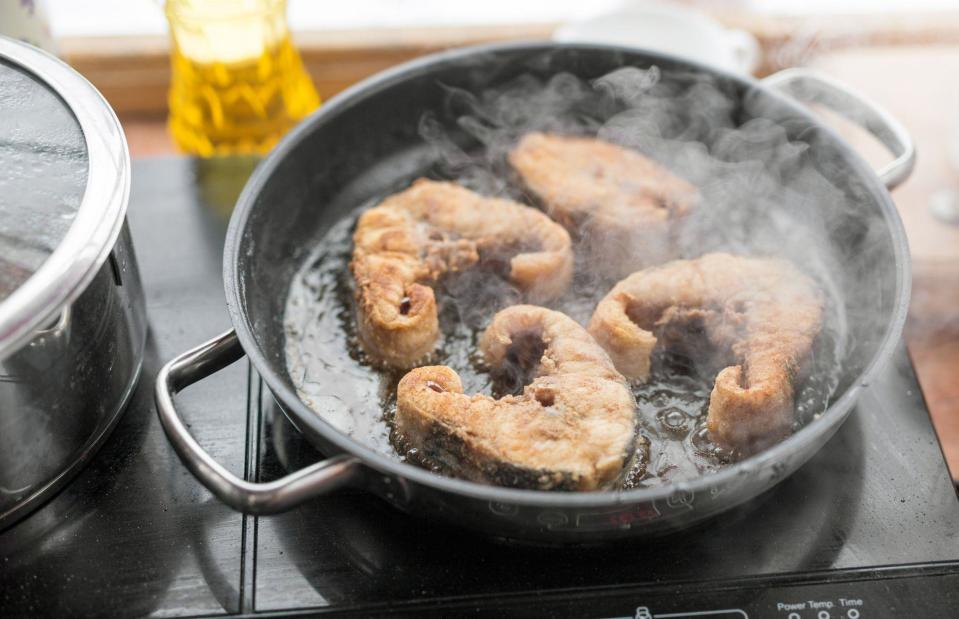
Gorloff-KV/Shutterstock
The kitchen might well be the heart of the home, but it can also be a danger zone. From careless knife handling to improper food storage, there are a number of easily avoidable mistakes that people commonly make while in the kitchen, many of which can lead to injuries or illnesses. Here we reveal the 29 most common dangerous kitchen errors (counting down to the most serious of all) and offer practical tips on how to avoid them.
Read on to discover how many of these mistakes you've made.
The following information and advice has been sourced from reputable organisations, including the British Food Standards Agency, the US National Fire Protection Association, the North Wales Fire and Rescue Service and the US Consumer Product Safety Commission.
29. Pouring hot liquids into cold glassware
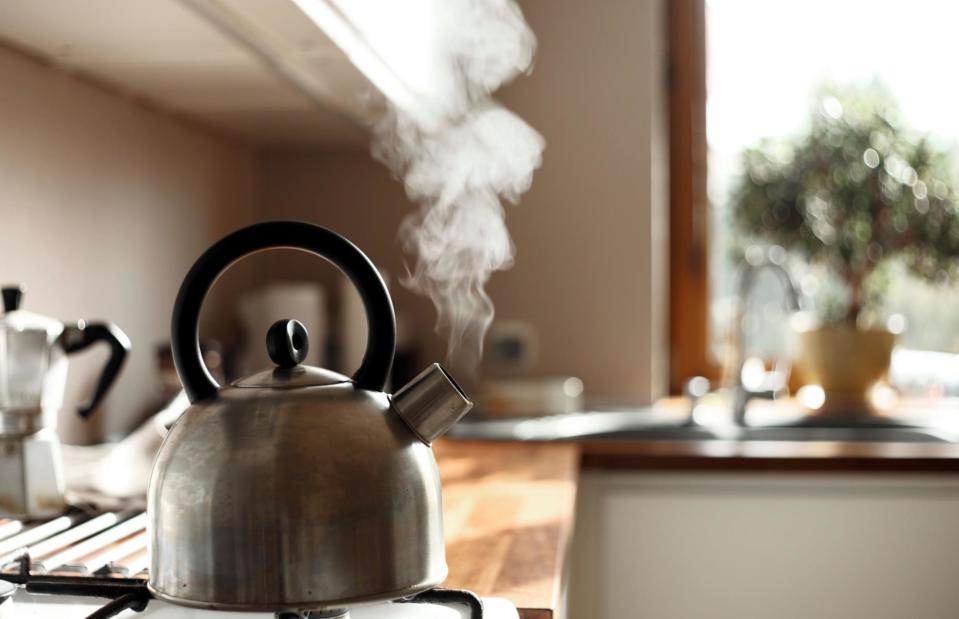
Wojmac/Shutterstock
Broken cookware is a top cause of injury in commercial kitchens, so there’s no reason why you shouldn’t take precautions in your home kitchen. Glassware is especially susceptible to shattering while being handled, particularly when it’s exposed to extreme temperature fluctuations. With that in mind, never pour hot liquids into cold glassware (or vice versa), always allow glassware to cool gradually before exposing it to temperature changes, and frequently inspect cookware for cracks, discarding items when necessary.
28. Not rotating store cupboard items
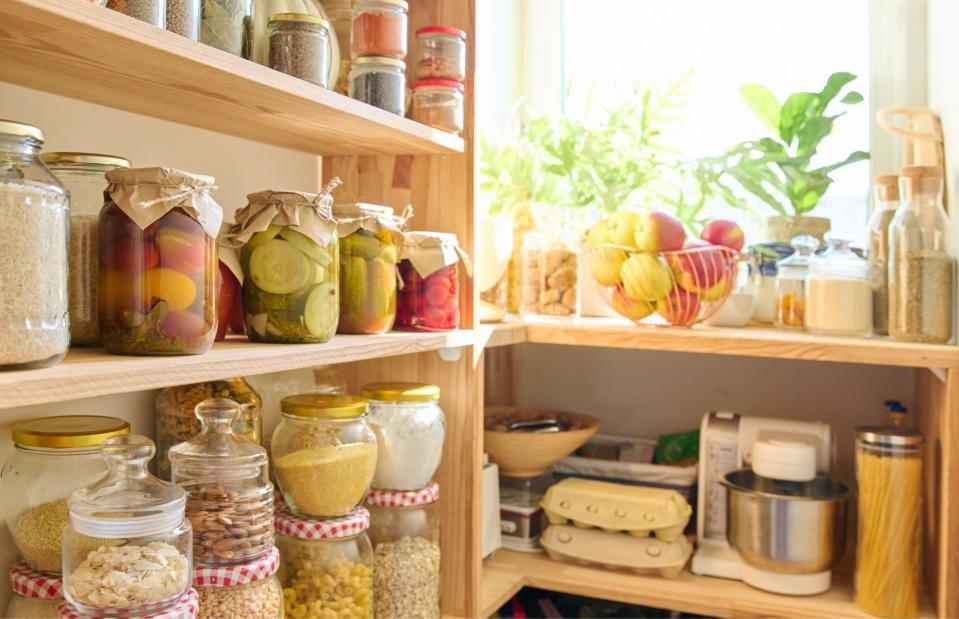
VH-studio/Shutterstock
Forgetting to rotate your dry ingredients can lead to expired or spoiled food – even in a cool, dry place, food stored for a long time is susceptible to pests like flour mites and weevils. The solution is simple: practice ‘First-In, First-Out’ (FIFO), so that you use older items first and ensure freshness. Place new items at the back, so that older items closest to their use-by date are at the front. This might seem like a constant shuffle, but it guarantees you're minimising wastage and not putting yourself or others at risk by eating food that’s past its best.
27. Microwaving liquids for too long
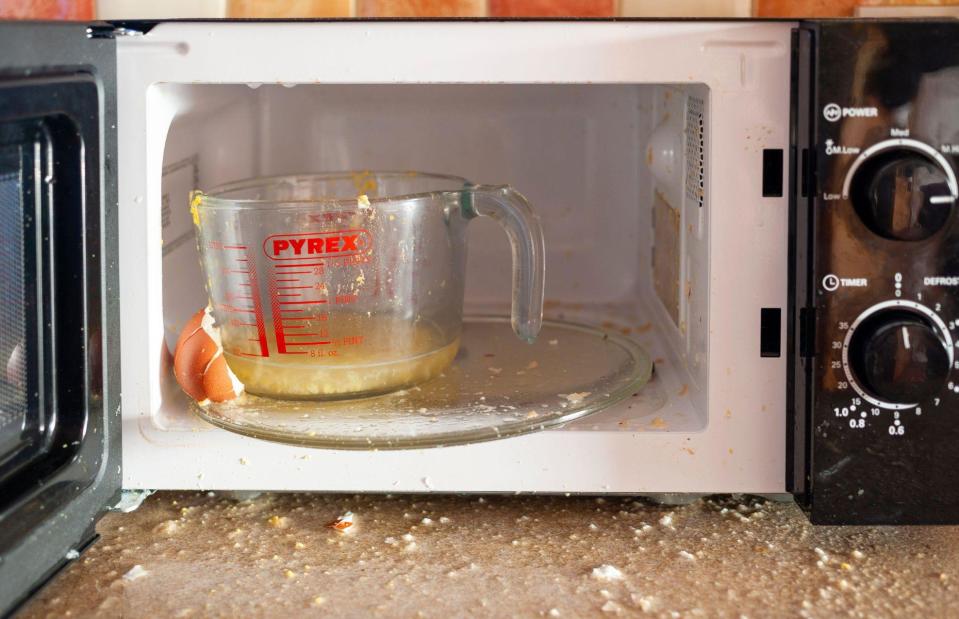
Stephen Power/Alamy Stock Photo
Microwaving liquids for too long can lead to what’s known as superheating, which can cause liquids to spontaneously boil over when disturbed. This tends to occur with smooth containers and prolonged heating and can lead to severe burns or a damaged microwave. To prevent this, heat liquids in short bursts, stirring between intervals, and use a non-metallic utensil like a wooden spoon to help bubbles form. Avoid standing too close to the hot container and let it sit briefly before handling.
26. Leaving plates or cookware on unstable surfaces
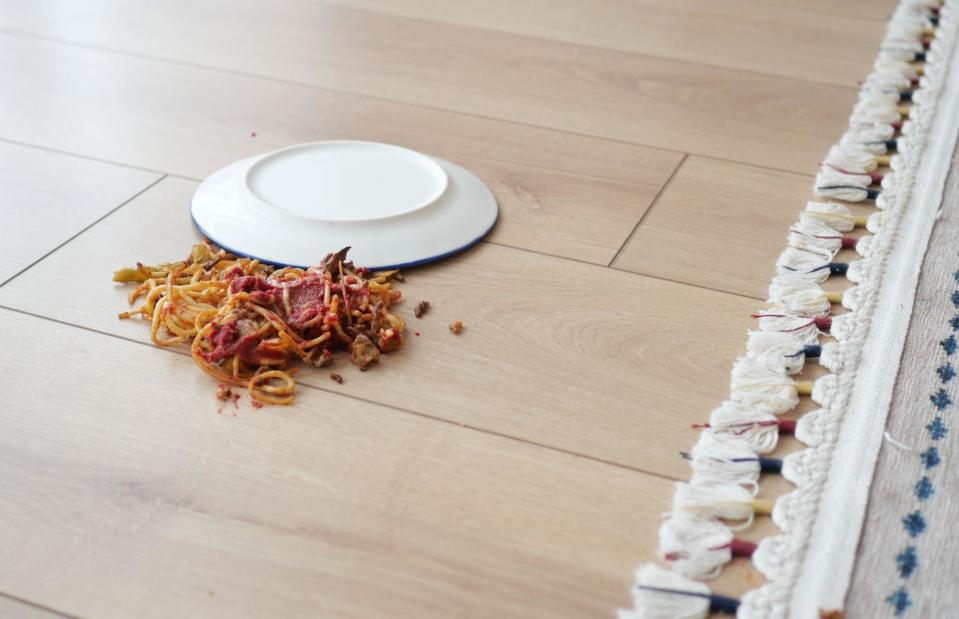
Towfiqu ahamed barbhuiya/Shutterstock
Spilled food is a common kitchen hazard that can cause slips and burns. Keeping plates and cooking vessels on a flat surface is the number one way to reduce the risk of this happening. You should also avoid setting items like pans near the edge of countertops where they can tip over and turn all pot handles inwards, so they don’t hang over the front of the stove. Keep a lid on pots and pans when transporting them to create a barrier against spills caused by bumps or sudden movements.
25. Using glassware on the stove
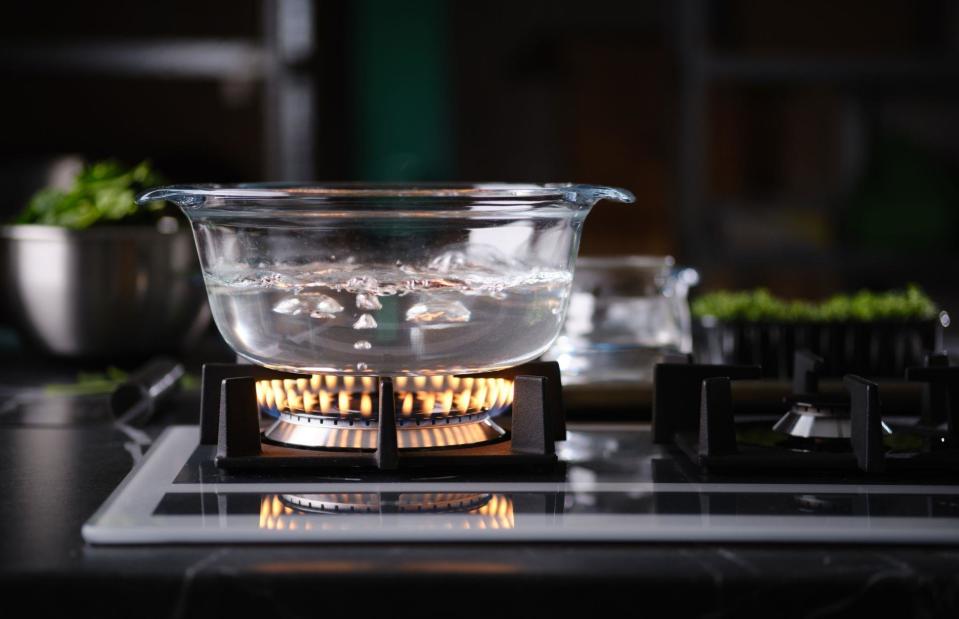
Aleksei Isachenko/Shutterstock
While it may look beautiful, glass cookware can shatter when exposed to extreme heat, open flames or temperature fluctuations, posing a significant safety hazard in the kitchen. The US Consumer Product Safety Commission estimates that over the course of a decade, nearly 12,000 people were injured by glass bakeware. Always establish what your glass cookware is specifically designed for (is it safe for the stovetop or purely for oven use?) to avoid accidents and potential injuries.
24. Not securing cutting boards or mixing bowls
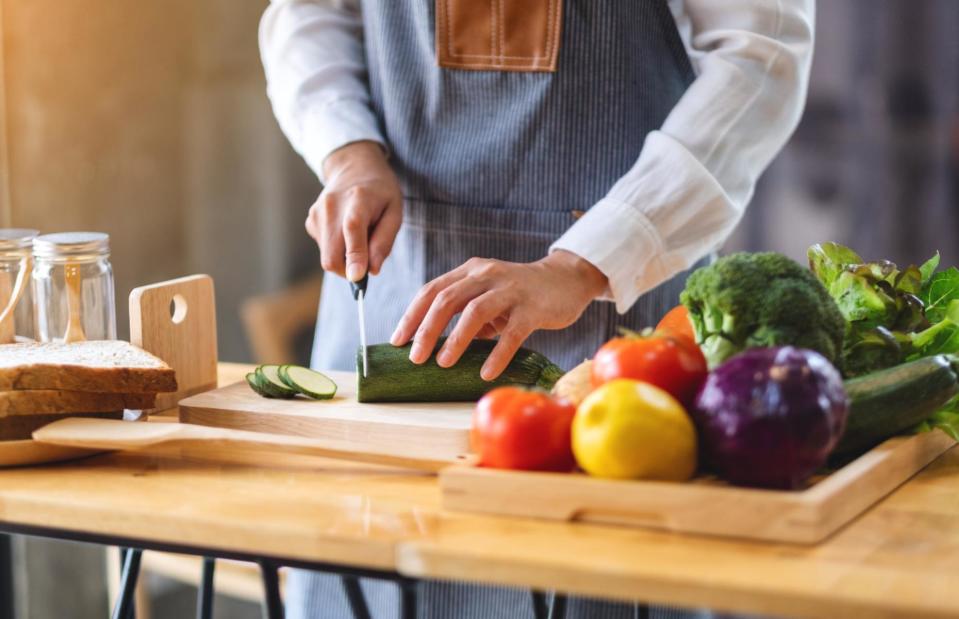
Farknot Architect/Shutterstock
When you’re busy vigorously whisking ingredients in a mixing bowl or cutting through a tough vegetable on a chopping board, you’re at risk of injury if the bowl or board isn’t secured in place. This is especially important for chopping boards – if the board slips while you’re using a knife, there could be serious repercussions. To prevent slipping, place a damp cloth or silicone mat under the kitchen item to keep it stable, or consider buying non-slip feet for your chopping board.
23. Using plastic containers in the microwave

goffkein.pro/Shutterstock
Microwaving plastic can cause harmful chemicals to be released into food. Heat speeds up hydrolysis – the process by which water molecules can essentially break chemical bonds apart – which can cause microplastics and chemical additives to leach into the food. The health impacts of high exposure to microplastics (and all the chemicals added to plastic) are still unclear, but the potential risks include immune issues, reproductive problems and metabolic disorders. In short, it really is best to only use microwave-safe containers, preferably those made from glass.
22. Not using the oven extractor fan
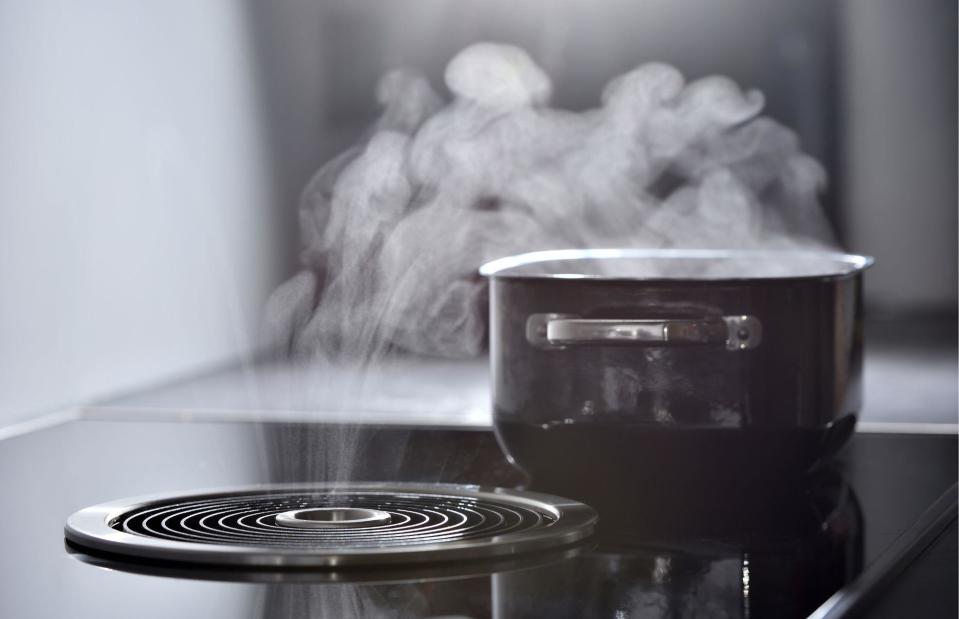
Dmitrii Pridannikov/Shutterstock
In a recent Canadian study, almost half of the participants reported rarely or never using in-built ventilation devices when baking or cleaning the oven. It's important to be aware of the risks here; poor ventilation in the kitchen can lead to smoke inhalation, carbon monoxide buildup and the inhalation of potentially hazardous chemicals released when cooking at high temperatures. To maintain good air quality and safety in your home, always turn on the extractor fan when cooking on the stove and open windows as soon as it starts to get smoky.
21. Storing heavy items on high shelves
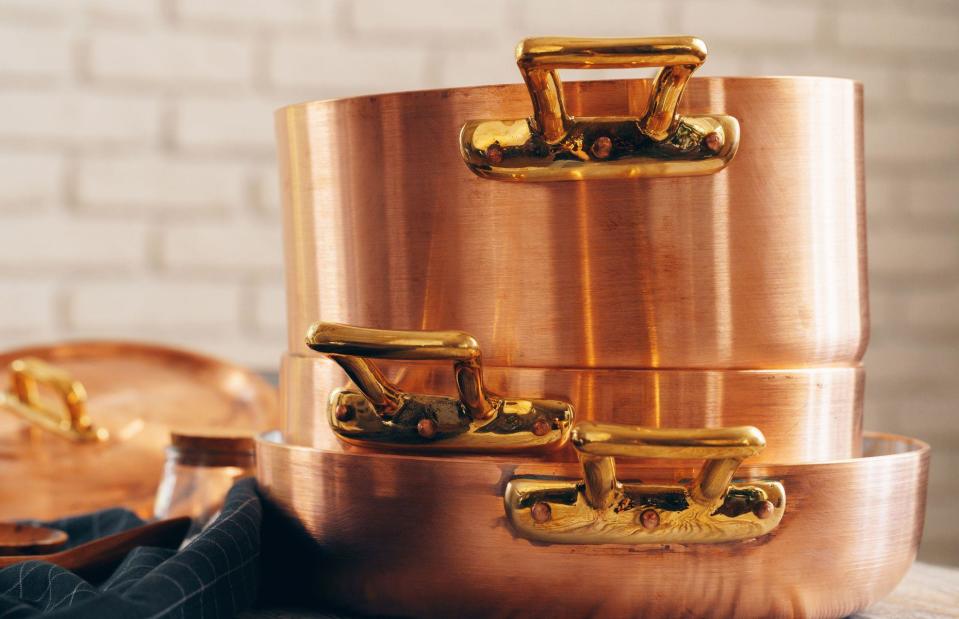
FabrikaSimf/Shutterstock
The majority of head injuries in the kitchen occur when people attempt to access heavy items like cast iron pans, large appliances or stock pots from high, overhanging shelves or tight, confined places. To reduce the chances of injury in your kitchen, store hefty items on lower shelves, where they’re easier to get hold of and less likely to cause harm.
20. Not storing leftover food correctly
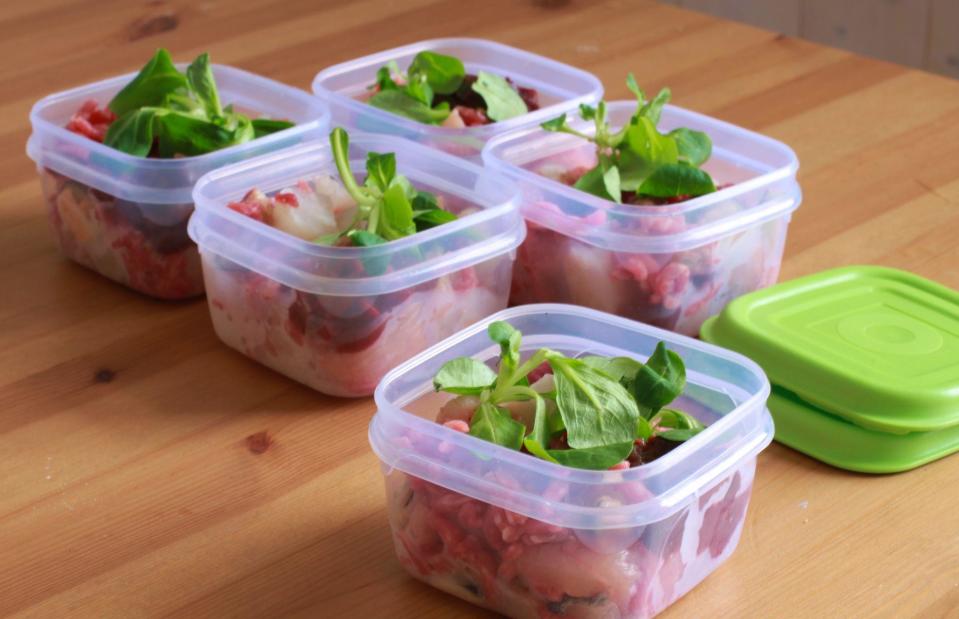
Swingout/Shutterstock
Reusing leftovers is key to minimising food waste, but that extra food does need to be treated in the right way to guard against illness. While many people tend to think it’s safer to eat food that has been gradually cooled to room temperature before refrigerating, this is actually not the case. Hot food should be cooled down as quickly as possible to prevent bacterial growth; the best approach is to divide it into smaller portions and refrigerate promptly. Similarly, always store food in lidded, airtight containers for maximum longevity.
19. Overheating non-stick cookware
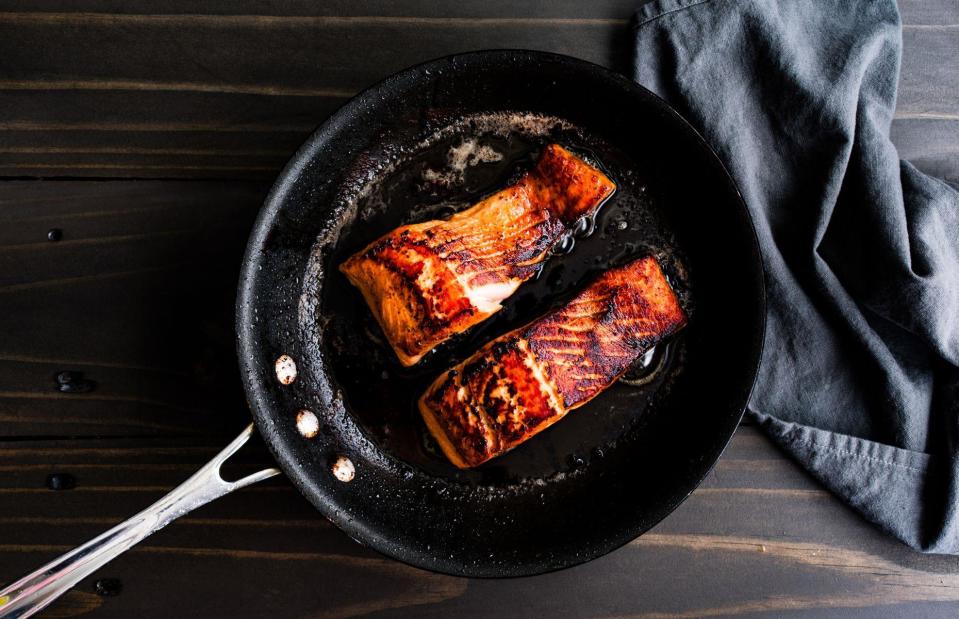
Candice Bell/Shutterstock
Non-stick cookware, while useful, can be dangerous if overheated. The non-stick coating can break down at temperatures above 260°C (500°F), which releases toxic chemicals into the food and can cause polymer fume fever, also known as Teflon flu. Extreme overheating (above 390°C/730°F) may cause more serious health issues. To prevent this, only cook at medium or low heat with non-stick pans, never preheat an empty pan and regularly inspect and replace damaged or scratched non-stick cookware.
18. Using damaged non-stick cookware

Maliflower73/Shutterstock
Using metal utensils and abrasive cleaners on non-stick pans can damage their surface and release harmful chemicals into your food. Studies suggest that 99% of Europeans have these chemicals, known as PFAS, in their bodies. High concentrations of PFAS may exacerbate the risk of health issues including hormonal imbalances, cardiovascular disease and cancer. Only use wooden or silicone utensils with non-stick cookware, replace damaged or scratched cookware and clean them with mild detergents and soft sponges.
17. Going barefoot while cooking
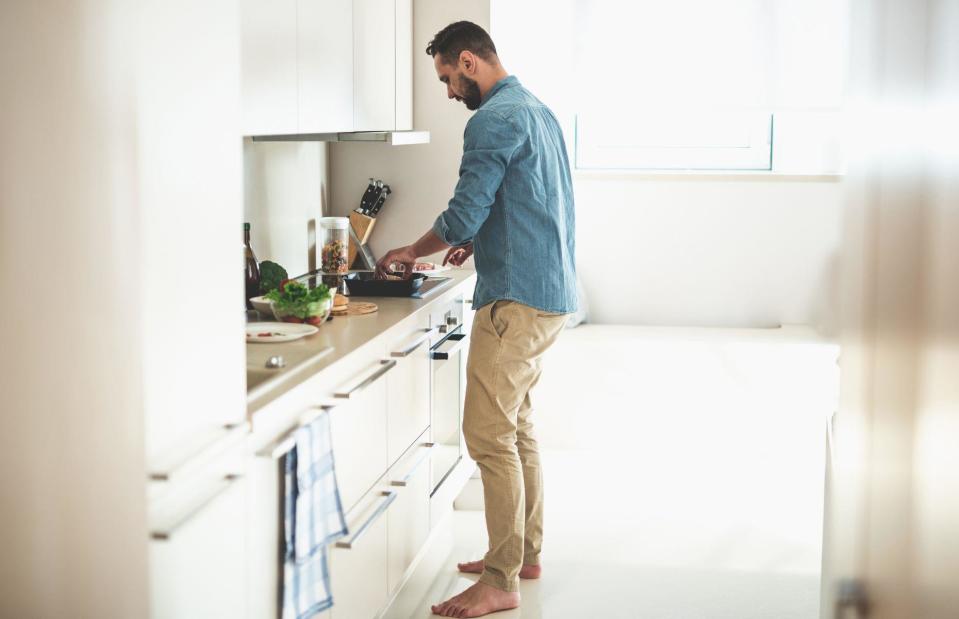
Olena Yakobchuk/Shutterstock
Bare feet are as vulnerable to kitchen injuries as your bare hands. Spilled liquids can cause slips and burns, falling objects can cause broken bones and dropped knives can result in serious cuts. To mitigate the risks, wear closed-toe shoes that are ideally water and slip resistant, so that you’re also protected from wet, slippy floors.
16. Not storing knives properly
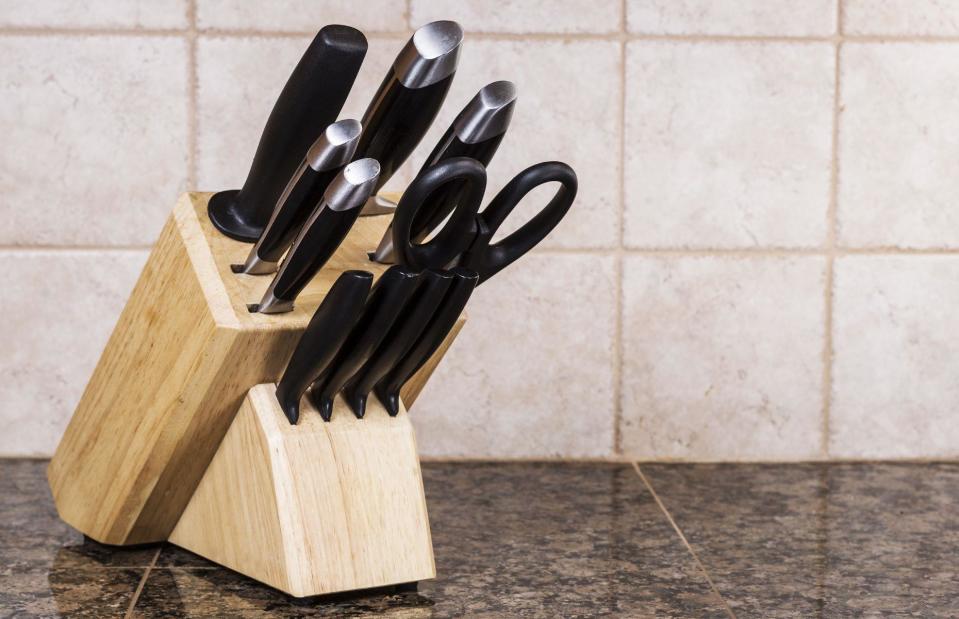
tab62/Shutterstock
Leaving knives out on kitchen counters or shoving them haphazardly into drawers can cause accidental injuries. A National Accident Helpline survey of 2,000 UK residents found that almost half of those surveyed had previously injured themselves when using kitchen knives. It’s crucial to store them properly: use a knife block, magnetic strip, or individual knife sleeves to keep the sharp blades safe. Leaving knives in the sink is also highly dangerous – wash your knives immediately and put them away safely.
15. Thawing meat at room temperature
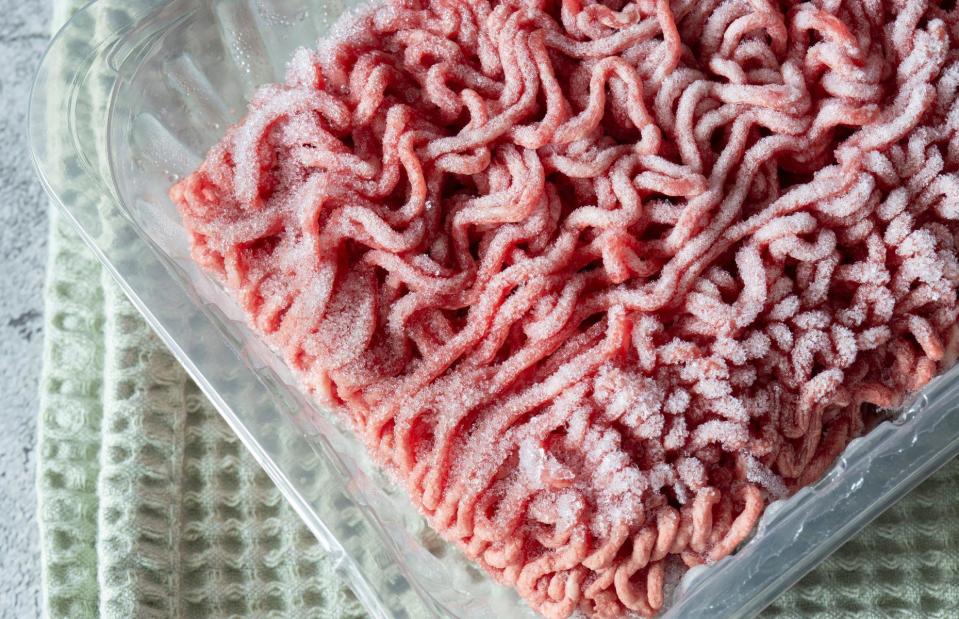
rigsbyphoto/Shutterstock
Thawing meat at room temperature can lead to bacterial growth and ultimately foodborne illnesses. When frozen food gets warmer than 4.5°C (40°F), or is at room temperature for more than two hours, it’s in what’s referred to as a danger zone, where bacteria multiply quickly. Instead, thaw meat in the fridge overnight or microwave according to the manufacturer's defrost setting and instructions. You can also thaw meat in cold water, but make sure to change the water every 30 minutes, to keep it from reaching room temperature.
14. Not cleaning the oven extractor hood filter
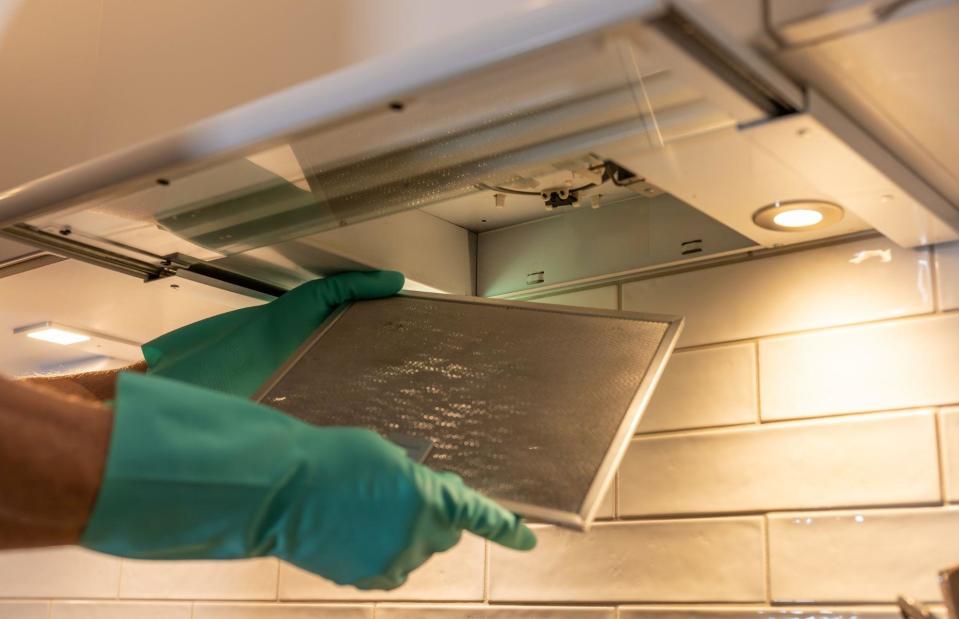
Alexanderstock23/Shutterstock
A dirty extractor hood filter can reduce ventilation efficiency and pose a significant fire hazard if it becomes clogged up with oil residue. Research conducted in the UK indicates that almost three quarters of all commercial kitchen fires originate in the ventilation systems of ovens, which shows just how important it is to be vigilant when maintaining your home appliance. To reduce the risk, ensure you regularly clean or replace your cooker’s extractor hood filter.
13. Using knives carelessly
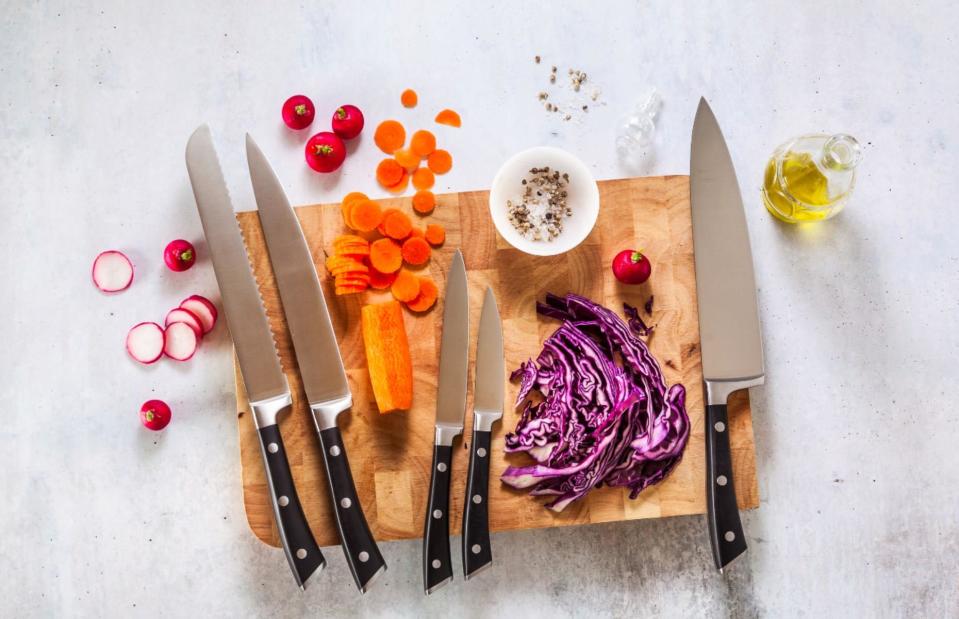
IriGri/Shutterstock
From holding the handle the wrong way to working with a dull blade, there are multiple ways careless knife use can result in serious injuries. In the US alone, over 100,000 people each year sustain knife injuries while preparing food. To prevent accidents, tuck your fingers on the hand holding the food in, keep the knife pointing down when not in use, and always use a sharp knife. Dull knives are more likely to slip, so keep knives sharp by using a honing rod, whet stone, or a manual sharpener.
12. Stacking dishwashers incorrectly

Marko Beric/Alamy Stock Photo
Dishwashers are brilliantly convenient, but they do come with their own set of safety concerns. Improperly loading a dishwasher can pose serious risks. Sharp objects like knives and broken glass may cause injuries, particularly if young children are helping to load or unload the dishwasher. To prevent accidents, place knives and sharp utensils in the utensil basket with their points facing down and make sure everyone is aware of the dangers of handling sharp or broken items.
11. Using one towel for everything
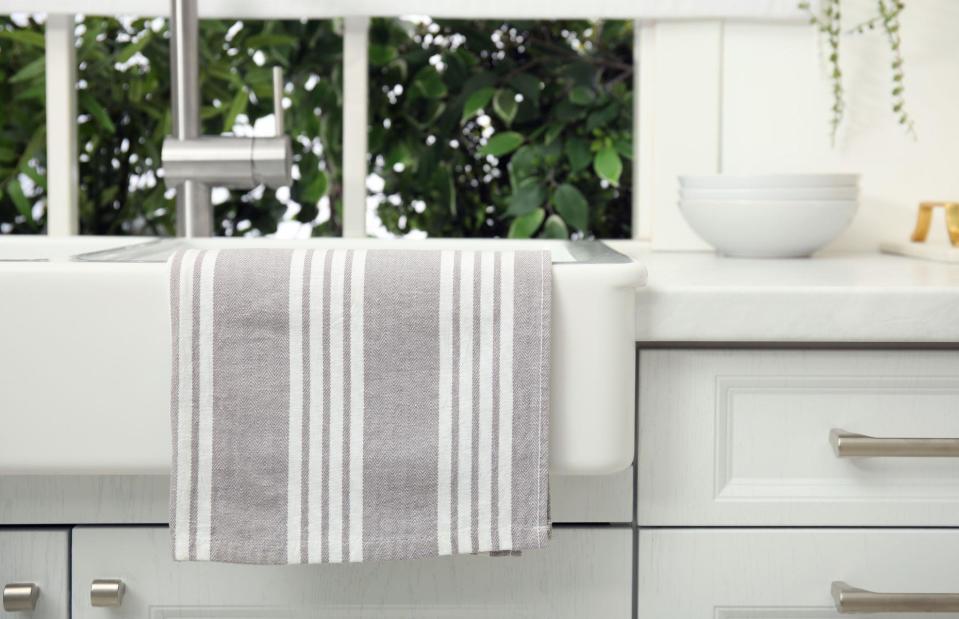
New Africa/Shutterstock
Using the same towel for different jobs can spread bacteria. For example, drying hands on a dish towel after using the bathroom can transfer pathogens to the towel. If this towel is then used to dry dishes, it can contaminate the dishes, spreading germs and potentially causing illness. A study by Michigan State University found that 89% of the 82 dish towels tested from household kitchens across the US had faecal coliforms. To prevent this, designate specific towels for drying hands, dishes, and cleaning surfaces respectively.
10. Storing cleaning products near food

New Africa/Shutterstock
When kitchen space is limited, it can be tempting to store cleaning products near food, but this can lead to food contamination and poisoning. Annually, 350,000 to 400,000 people in the UK are treated in hospitals because of poisoning from household cleaners. Designate a space for cleaning supplies under the sink, in labelled cabinets with child locks, or embrace natural cleaning alternatives like vinegar, baking soda and lemon juice.
9. Not separating raw meat from ready-to-eat foods
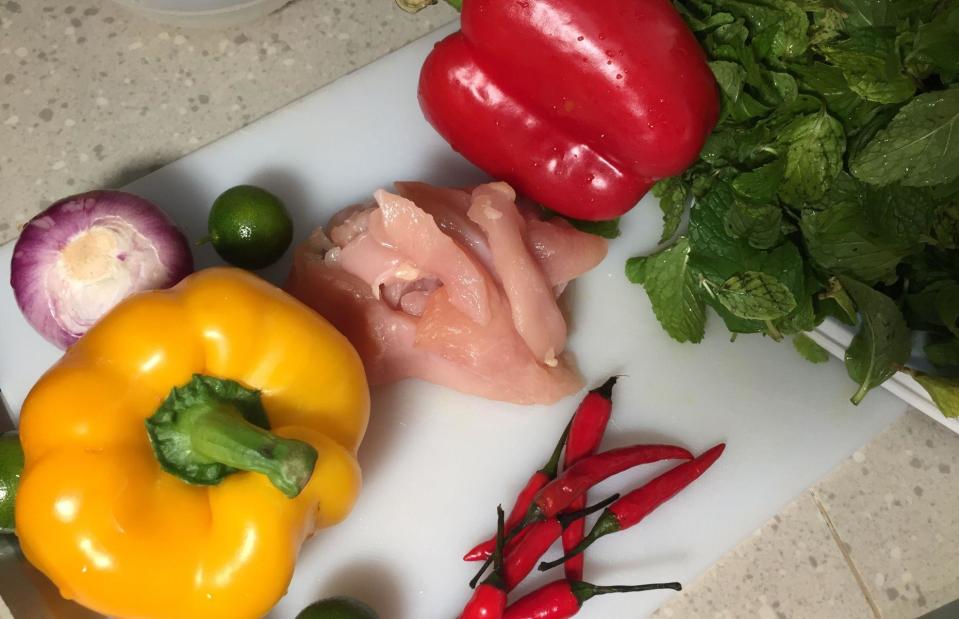
kathrinerajalingam/Shutterstock
Mixing raw meat with ready-to-eat food can cause cross-contamination, meaning that bacteria or other microorganisms are unintentionally transferred from the raw meat to other foods. To keep you and your loved ones safe, always use separate cutting boards and utensils for raw and cooked meats and clean all kitchen equipment that comes into contact with raw meat thoroughly with hot, soapy water. The Food Standards Agency (FSA) also recommends preparing vegetables and fruit first, followed by raw meat, fish or poultry.
8. Using appliances incorrectly
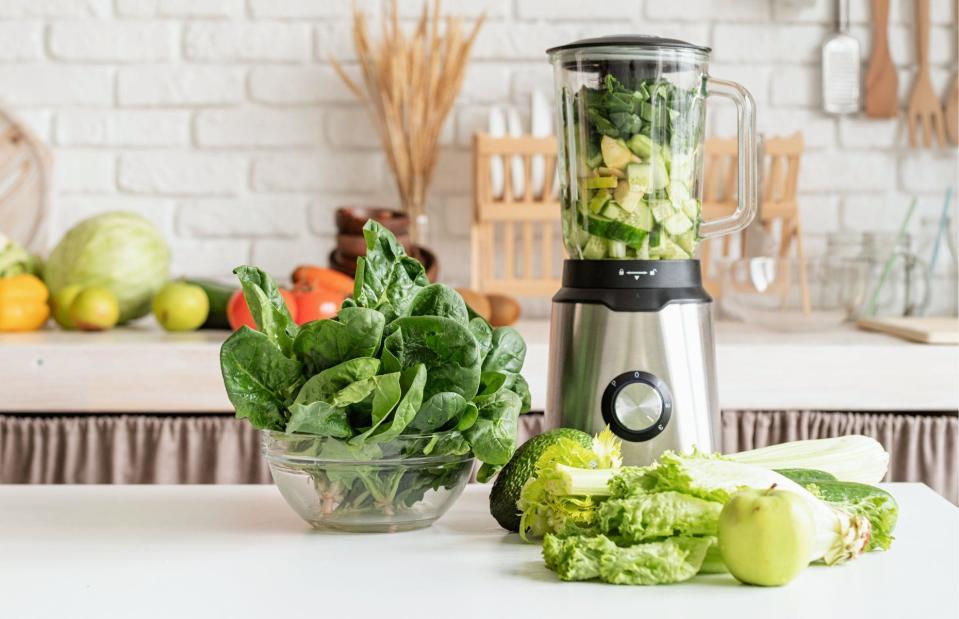
ilona.shorokhova/Shutterstock
Between 2021 and 2022, the leading cause of fires in UK homes was the misuse of appliances, such as forgetting to unplug items before cleaning them, overloading containers and plugging too many appliances into a single outlet. Always unplug equipment before cleaning, secure loose wires to prevent trip hazards and stop using an appliance immediately if you think it is under excessive strain.
7. Getting distracted when cooking

Gorloff-KV/Shutterstock
Getting distracted while cooking is another major cause of fires in the kitchen. However, fires aren't the only danger; if you’re not paying attention, you can easily burn yourself on an overheated pan or cut yourself with a knife. From scrolling through social media to talking on the phone, there is a long list of ways you can get side-tracked when cooking – do try to stay focused and avoid multitasking to ensure maximum safety.
6. Using wet or damaged oven gloves and towels
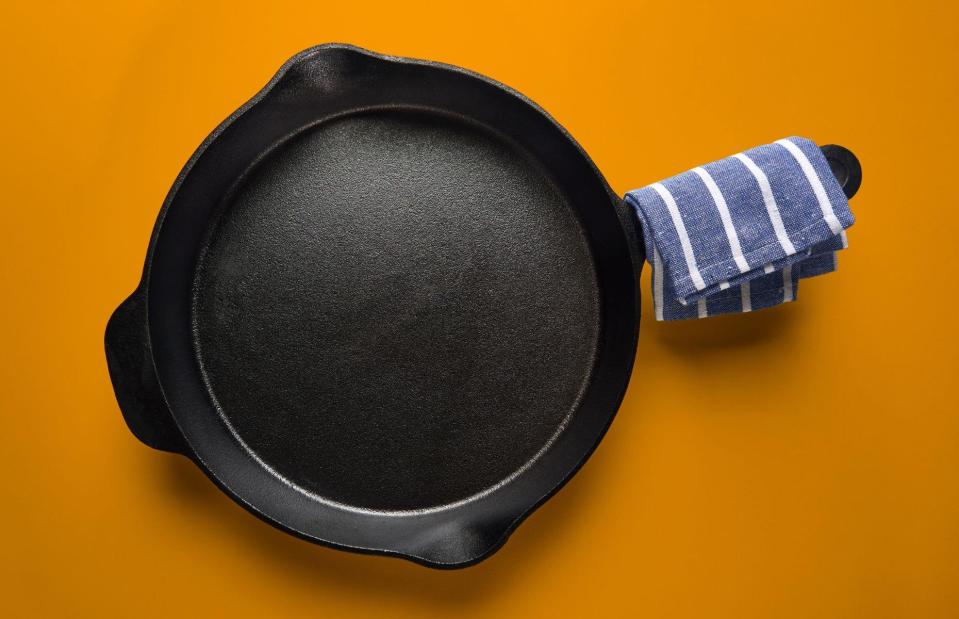
dioimagens/Shutterstock
When damp fabrics are exposed to heat, they can produce steam that may lead to severe burns. Oven gloves are designed to be poor conductors of heat, so keeping them clean and dry ensures they work properly. Similarly, a wet towel can transfer heat and cause burns. To prevent this, use dry, heat-resistant towels or pot holders when handling hot pans, and use a lid when boiling liquids to reduce splashes on yourself and your towels.
5. Touching electrical appliances with wet hands

cunaplus/Shutterstock
Handling electrical appliances with wet hands can result in electric shocks, which not only cause pain, but could pose a fire risk and ultimately be life-threatening. Always ensure your hands are thoroughly dry before using any electrical appliance and double-check that appliances are turned off after use. Regularly check your appliances for cracks, exposed wires or degrading parts to keep them working safely and smoothly.
4. Wearing loose clothing when cooking

IRA_EVVA/Shutterstock
Cooking in loose clothing or with untied hair can cause serious injuries; both material and/or hair can get caught in appliances or catch fire if you're cooking over an open flame. To prevent these issues, wear fitted, non-flammable clothing (think natural cotton over synthetics), secure loose garments with an apron and always tie hair up. Additionally, use long-handled utensils and avoid reaching over open flames.
3. Leaving the stove unattended
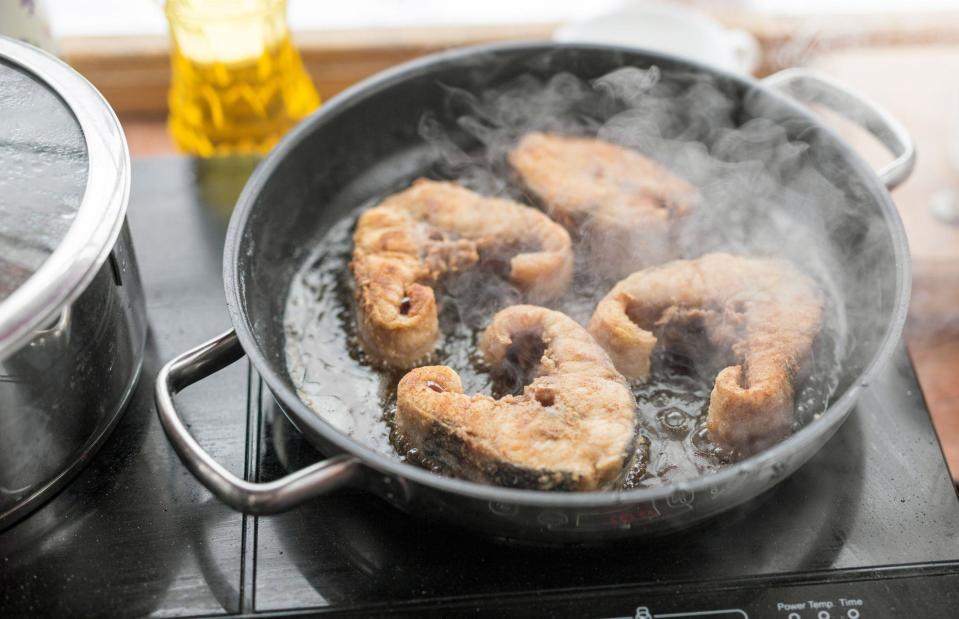
Gorloff-KV/Shutterstock
Unattended kitchen equipment is a factor in over a quarter (29%) of all reported home cooking fires in America and the second leading cause in home fire deaths. Always stay in the kitchen while cooking and don’t allow yourself to become distracted while doing so. Store potentially flammable items, such as oven gloves, wooden utensils, food packaging and dish towels a safe distance from the oven and if you need to step away from the stove, always use a timer to remind you to check back frequently.
2. Pouring water over a grease fire

mon_ter/Shutterstock
In the US, more than half of home cooking fires start when cooking materials ignite. Despite what you may think, pouring water on a grease fire (a fire that involve fats, oils or grease) causes it to spread, rather than subside. Instead, smother the fire with a lid or baking tray or use a wet chemical fire extinguisher. For small fires, drape a water-soaked towel over the pan to put out the flames.
1. Not keeping a kitchen fire extinguisher handy
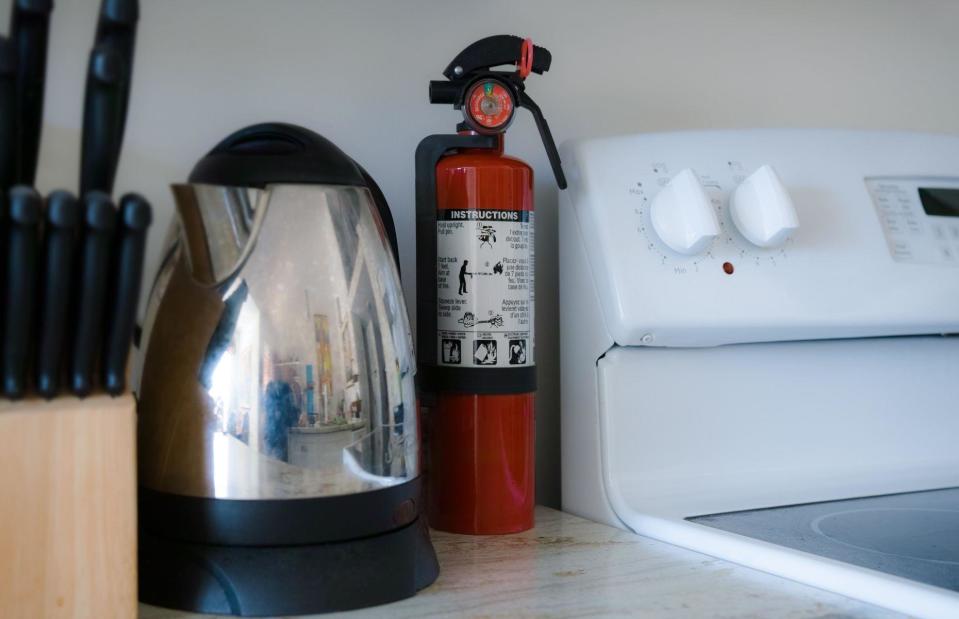
f:nalinframe/Alamy Stock Photo
A fire extinguisher is your first defence against kitchen fires, which are the leading cause of home fires in the US. Having the right fire extinguisher readily available is crucial for containing the fire before it spreads, so always have one in your kitchen and know how to use it. Automatic extinguishing systems (AES) are also highly efficient and well worth considering; in the US between 2017 and 2021, 12% of kitchens that experienced kitchen fires had these systems fitted and only 1% of fire deaths occurred in these homes.
Now learn all about the foods that should never be kept in the fridge

